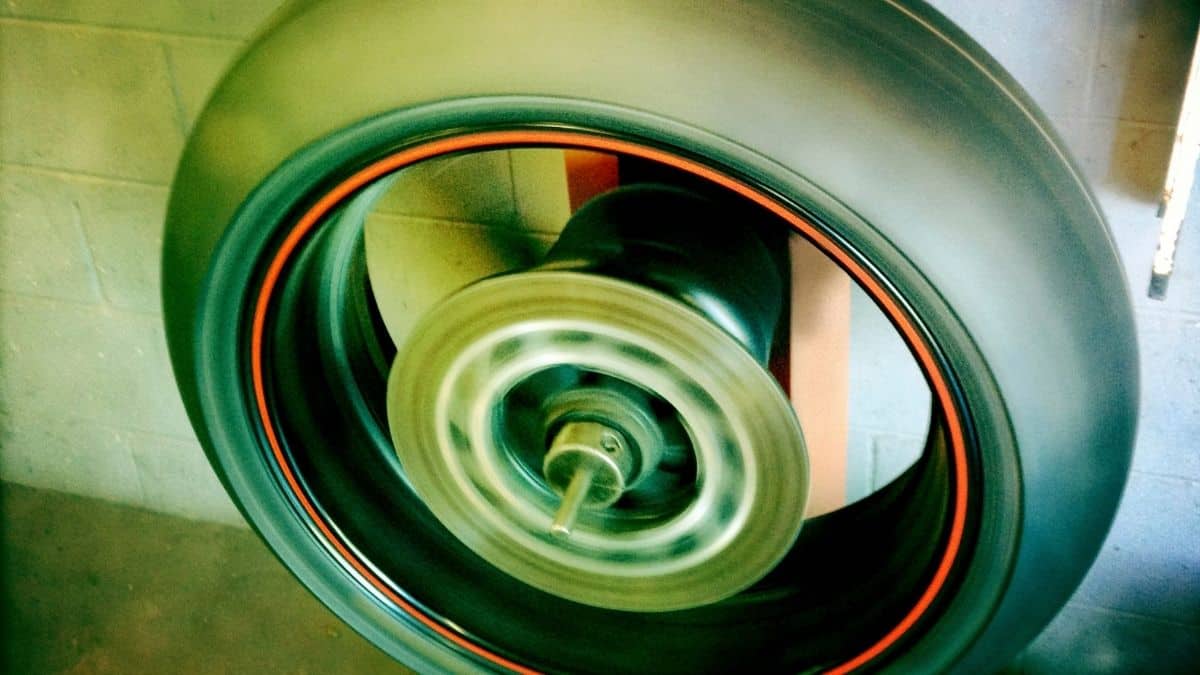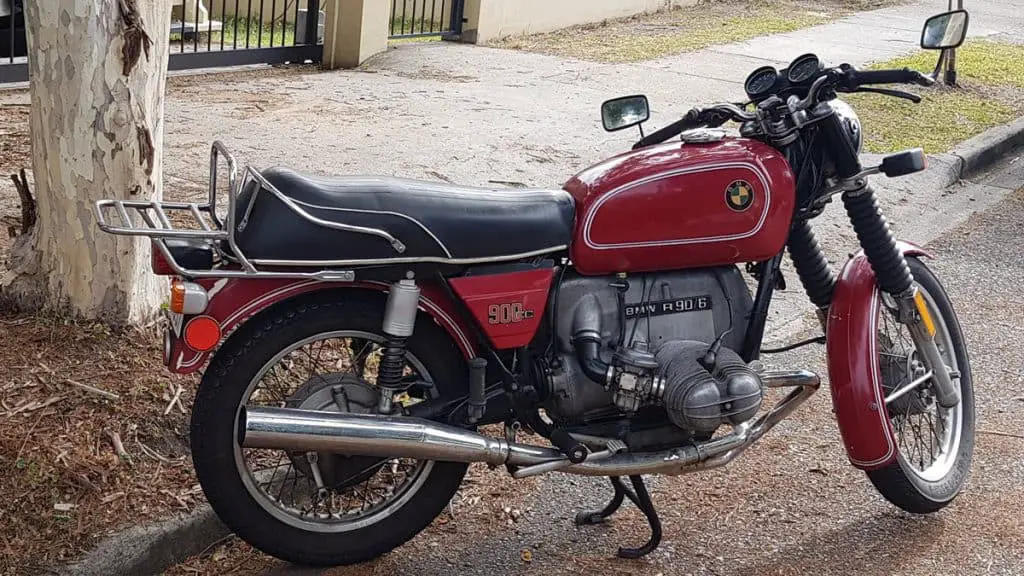Motorcycle Tire Balancing Beads—Adieu Mr. Wobble (Or Not)
Take any discussion on the topic of balancing tires. Nine times out of ten, it will lead to the subject of using balance beads for motorcycle tires.
Unless you just came back from being marooned on a remote island, you must have heard about balancing beads. Suffice to say, it’s a hot topic of discussion. And you will find plenty of theories for and against their application.
To understand the truth you need to cut through all the gibberish.
So before you decide which side you are on, you need to learn all about balancing beads for motorcycle tires.
The Concept of Balancing Tires With Beads
If you don’t know this already, balancing beads are not just used in motorcycle tires but in all vehicles. They can work on cars, trucks, trailers, and ATVs as well.
These small, high-density ceramic or glass spheres are injected inside the tire. They are often coated with materials like silicon to keep them moisture-free and prevent clumping.
The smooth surface also minimizes friction and prevents the wearing of the tire rubber. Thanks to their durable finish, the beads won’t turn into dust with time.
The process of injection is usually through the valve stem. So you don’t need to dismantle the tire to insert these beads.
A big advantage is, the process is easy and it only takes a few minutes to inject the beads into a tire. You don’t need to set up a motorcycle stand or use a jack for this either.
Once that’s done, your tires will remain balanced at all times.
Also, if you change the tire, you can simply scoop the beads out and reuse them.
And before you ask, you will NOT hear any sound of rotating beads from the tire while riding.
Fair enough, but do tire balancing beads work?
They do. At least for some riders.
I‘ve met riders who are die-hard admirers of balancing beads. For many of them, beads worked better than balancing weights.
But there are others who find beads not to be the best option for any type of spirited riding.
What’s the problem?
There are two main types of tire imbalances caused by squared off tires or changes in tire shape.
- The first one is static imbalance. This is due to the development of a heavy or a light spot in the tire. This can cause uneven rolling in the vertical plane
- Next, there’s dynamic imbalance. This is a sideways movement caused by uneven weight distribution on the two sides of the tire.
As per the bead manufacturers, the balancing beads will work for both types of balancing.
But I have to say, when it comes to dynamic balancing or if your tire has a lateral imbalance, there’s no independent research that suggests that the beads work effectively!
So, some riders find it hard to trust their balancing ability.
Long story short, balancing beads may or may not work for you. It depends on multiple factors like your tire size, tread condition, and riding environment.
(Tough decision, eh?)
How Do Tire Balancing Beads Work?
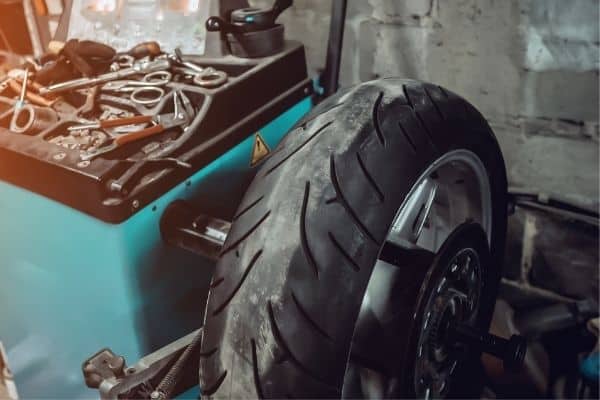
To be honest, this is a subject that’s related purely to the physics of a motorcycle.
(Wake me up when you are done with that part.)
Imagine riding at 50 miles per hour.
At such speeds, the tire revolutions per minute will generate a sufficient amount of centrifugal force. As a result, a 5 oz heavy spot in the tire can multiply itself and become a few pounds.
Now that additional weight will move up and down, sending continuous shockwaves to the suspension. This will result in a rebound effect which will cause vibrations and an out-of-balance feel.
💡 As the speed reduces, the centrifugal force comes down. So the effect is more noticeable only at certain speeds.
When you are balancing tires with beads, you are using the weight of the beads to counterbalance the heavy spot.
When the tire is at rest, the beads will sit at the bottom. As the tire rotates, the beads are also acted upon by the same centrifugal forces and start moving around. Ideally, they should be evenly distributed along the tire circumference.
But that doesn’t happen due to the imperfections or heavy spots in the tire.
Since these beads are free-flowing, they will position themselves opposite the heavy spot in the tire due to inertia. This will balance out the up and down movement and reduce vibrations.
Each time the vehicle stops and restarts, rebalancing will occur. This ensures that the wheels remain balanced, as the tire shape or profile changes.
Frankly, this might be the perfect answer if that 50mph wobble is bothering you.
But hold on a minute!
The centrifugal force comes down at lower speeds. Does that mean the beads will not stay in position when you’re riding at slow speeds?
(You took the words right out of my mouth amigo)
Ideally, the beads should work when you are at speeds above 25 to 30 mph. The exact speed for them to start working will also depend on the tire size and diameter.
Some manufacturers mention that tire imbalance occurs only at a critical rotational speed. So the beads need to act at this speed only.
But imagine driving on a bumpy road at lower speeds with an unbalanced tire. Not fun at all.
Chances are that the beads will have a hard time staying in position in such conditions.
There’s a solution though.
Manufacturers are using specially coated beads that develop an electric charge as they move inside the tire. This allows them to stick to the rubber surface even at lower speeds.
Some manufacturers claim that their beads will remain in the right position even when the bike comes down from 60 mph to 10 mph within a few seconds.
Here’s another way to look into how do balance beads work in tires.
Some experts believe that the beads don’t have much of a counter-balancing effect. However, they increase the tire’s mass and add to the momentum. This helps in absorbing some of the vibrations at higher speeds.
In addition, even if they remain evenly distributed across the circumference, they help in keeping the center of mass of the tire in position.

What’s the catch?
Well, with an increase in wheel mass, there will be some reduction in acceleration. On top of that, the fuel economy may take a hit.
(Admittedly, some manufacturers mention that their beads improve fuel efficiency. But I will take that with a pinch of salt.)
Beyond that, there are chances too small beads might clog the valve core.
Will using balancing beads for motorcycle tires void the tire warranty?
Good question. Also, a common one that many first-time bead buyers have.
Bead manufacturers will tell you that using beads will not be a problem, as the beads don’t damage the inside of the tires. However, it’s best to check with the tire manufacturer and confirm.
Let me quote what Dunlop says in this regard…
“Dunlop does not recommend the use of dry or liquid balancers/sealers and will not warrant tires into which these materials have been injected. Tire and wheel assembly balance must be checked with a balance stand or computer wheel balancer.”
Tire Balance Beads vs Weights
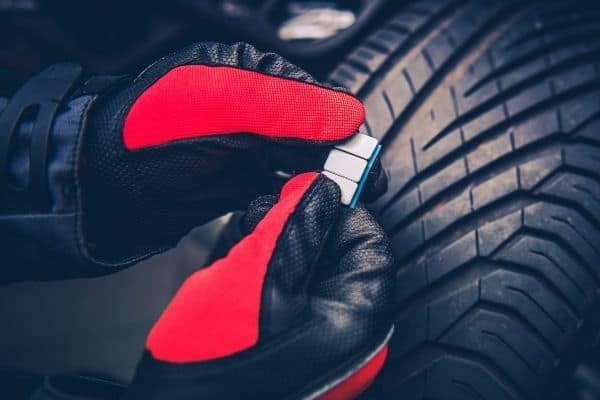
Balancing weights have been around for quite some time and are still a popular choice.
When it comes to motorcycle tire balancing beads vs weights, the primary difference is in the working method.
Weights are fixed in one spot and can’t move around. Beads can move around freely and adjust their position depending on the changing balancing needs of a tire.
And as we all know; weights can get knocked off during a particularly rough ride. That means you need to buy new ones.
With balancing beads, there’s no chance of that. Once injected, the beads will work through the entire life of the tire. Besides, beads will preserve the clean look of your brand new tire.
Last but not least, you need to dismantle the tire from the wheel assembly to install the weights. That can take close to an hour for each wheel.
On the other hand, injecting balancing beads takes not more than 10 minutes for each tire.
That said, using poor-quality balancing beads can result in damage to the internal surface of the tire. So always ensure that you use top-grade products from reputed manufacturers that are non-abrasive and non-corrosive.
Generally, balance beads are preferred for larger vehicle tires where they have more space to move around. When it comes to motorcycle tires, both weights and beads are good choices.
Basically, it all comes down to the tire type and your individual preferences.
How Much Balance Beads Do I Need?
For using balancing weights, a computerized balancer is used to determine the amount of weight needed.
But with balance beads, there’s no such method used. You need to follow the motorcycle tire balancing beads charts provided by the manufacturers. For example:
| WIDTH | OUNCES OF BEADS | |
| FRONT TIRES | 80-120 mm | 1 oz |
| 130 mm | 2 oz | |
| REAR TIRES | 130 mm-240 mm | 2 oz |
| 250 mm-360 mm | 3 oz | |
| DUAL PURPOSE (Offroad w/ rim locks) | [Front Tires] 80-120 mm | 2 oz |
| [Rear Tires] 130 mm-230 mm | 3 oz |
Some manufacturers also use multiple parameters to determine the amount of beads needed for each wheel. These are rim size, tire width, and aspect ratio/series.
IOn most cases, front tires between 80 to 120 mm in width need one ounce of beads. Rear tires between 130 to 240 mm in width need 2 ounces of beads.
And even if you don’t count calories, make sure to count the ounces. Stuffing your tire with more beads is a bad idea.
Actually, putting too many beads in a small tire can affect performance. In such cases, the beads fail to distribute themselves due to the lack of space in the tire cavity.
Top Four Balancing Beads — A Quick Overview
Now that you know the basics about bead balancing motorcycle tires, it’s time to pick the best balancing beads. Here are the top options that you can choose from.
ABC Motorcycle Tire Balancing Beads

The balance beds from ABC are made from tempered glass and have a silicone coating. As a result, they repel moisture and don’t stick together. The perfectly spherical shape of the beads also keeps temperatures low and prevents any damage to the rubber from inside.
These beads also have what ABC calls memory technology. The electrostatic force between the beads and the rubber makes them stick to the rubber surface. This ensures precise balancing at a wide range of speeds. ABC also mentions that their beads improve fuel economy and reduce tire wear.
However, these beads are pricey. If you’re looking for budget options, look elsewhere.
Counteract Tire Balancing Kit

The Counteract uses micro-glass to manufacture beads and they have a special coating. This reduces vibrations and heat buildup in tires. The high-quality ensures that the tire remains free from damage and the beads are distributed effectively.
As per Counteract, these beads act to balance the wheel assembly at all speeds and not just above 30mph. Also, they are not affected by moisture and do not degrade with use.
Counteract also mentions that their beads are have been tested and proved to improve the fuel efficiency of vehicles. In addition, tests conducted at the University of Uberaba in Brazil prove that these beads make tires run cooler than other competing products.
E-Z Tire Beads

The ceramic beads from E-Z are can help in balancing out the heavy spots in a tire effectively. The high-quality beads are long-lasting and do not damage the interior surface of the tire.
Note, the company doesn’t mention anything about the beads acting at all speeds. The bead action is limited to critical speeds at which the tire imbalance causes a vibration. The centrifugal force acting on the beads is the main driving factor behind the performance.
Another plus is the affordable price tag. This makes the EZ tire beads a great pick for budget buyers.
Dyna Beads
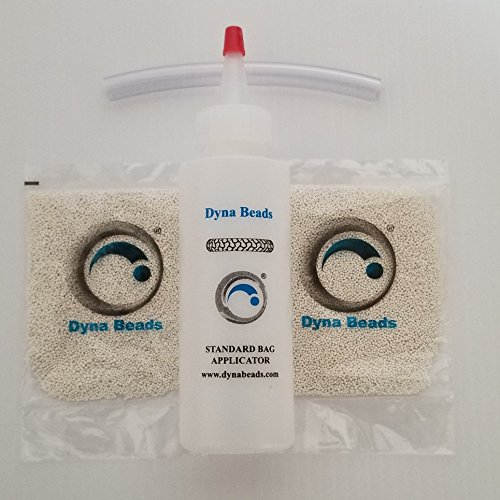
Dyna balance beads are made from high-density ceramic too. The material is durable and resistant to physical or chemical degradation. Rest assured, they won’t break down inside the tire. In terms of functionality, they reduce vibrations and also eliminate cupping of tires.
On the downside, these beads are free-flowing and don’t come with electrostatic properties. So the performance at lower speeds or on bumpy roads might get affected.
The affordable price tag is another aspect that makes the Dyna beads for motorcycles a value for money choice for riders.
Frequently Asked Questions
How do you balance a motorcycle tire with beads?
The tire balancing beads are injected inside a motorcycle tire through the valve stem. Or else you can insert them while the tire is being mounted. Once the beads are in, they will automatically balance the tire by positioning themselves as the tire rotates.
Are balancing beads worth it?
The jury is still out on whether balancing beads are worth it. The manufacturers claim that they reduce vibrations and tire wear. While some riders have found balancing beads to be very effective, others haven’t.
How long does it take for balancing beads to work?
Once inserted in the tire, the balancing beads start to function as soon as you start riding. They don’t need any extra time for set up.
Last update on 2023-06-29 / Affiliate links / Images from Amazon Product Advertising API

